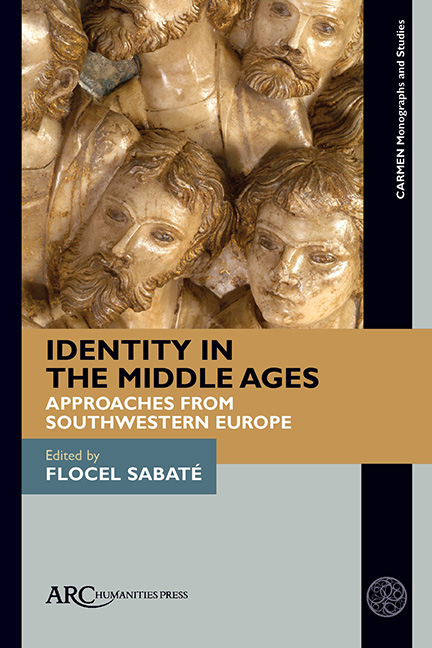Book contents
Chapter 19 - Constructing an Identity: Urban Centres and their Relationship with the Crown of Navarre, 1300–1500
Published online by Cambridge University Press: 20 January 2022
Summary
ISSUES RELATED to individual or collective identity have been a favourite subject of analysis among historians for some time now. In this respect, and for the medieval period in particular, an analysis of the processes of construction of the elements involved in the creation of a political identity in a wide range of scenarios takes on particular importance. The aim here is to examine the process of construction of the identity of urban centres in Navarre, highlighting a series of features that run parallel to other similar processes in medieval Western Europe, although we will also refer to some characteristics specific to Navarre. Before beginning the analysis, however, it is perhaps useful to make some brief initial points, both regarding the historiographical context of Navarre in general and the concept of identity.
Background
The urban world of Navarre has traditionally been examined from a perspective very closely related to its legal parameters: together with the case of the civitas episcopalis of Pamplona, we consider “urban” centres to be those that received a specific statute or charter (fuero); in this case a kind of franchise for Franks, but not others. This perspective means that we first need to provide a few explanations. First of all, we should point out that very different places with varying demographic and economic weight received this type of statute, so that in the heart of the Middle Ages, we can count twenty-seven “good towns” (buenas villas, bonnes villes) in Navarre to the south of the Pyrenees, but only three had more than five hundred “households” (fuegos). However, it is clear that the three boroughs of Pamplona (the civitas itself, San Saturnino, and San Nicolás) had around one thousand.
At the other extreme, fourteen of these entities had fewer than a hundred households, and a further two were just above this figure (one with 101 and the other with 107), while some show figures that are almost ridiculous (seven, twelve, eighteen). In other words, we are talking about very small urban centres (at least in legal terms), to which we need to add economic activities that—except, perhaps, for the half-dozen that are clearly important Good Towns in the urban structure—largely take place in the rural environment.
- Type
- Chapter
- Information
- Identity in the Middle AgesApproaches from Southwestern Europe, pp. 379 - 406Publisher: Amsterdam University PressPrint publication year: 2021



